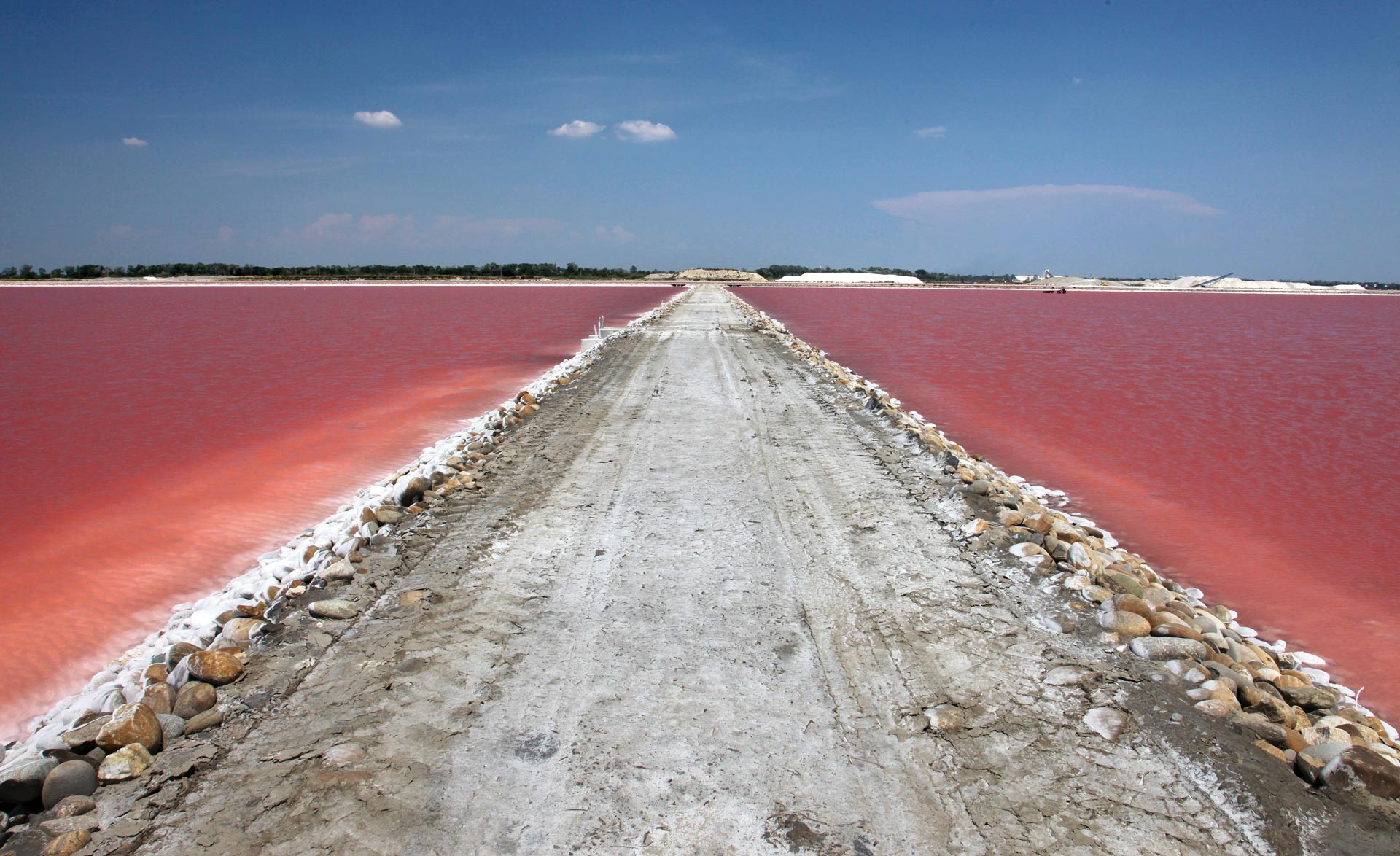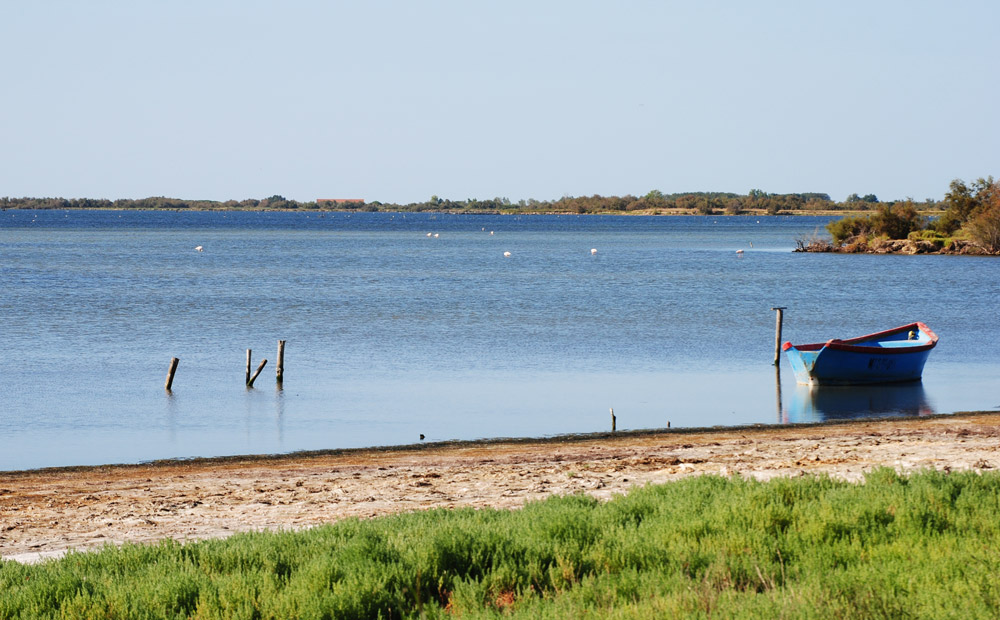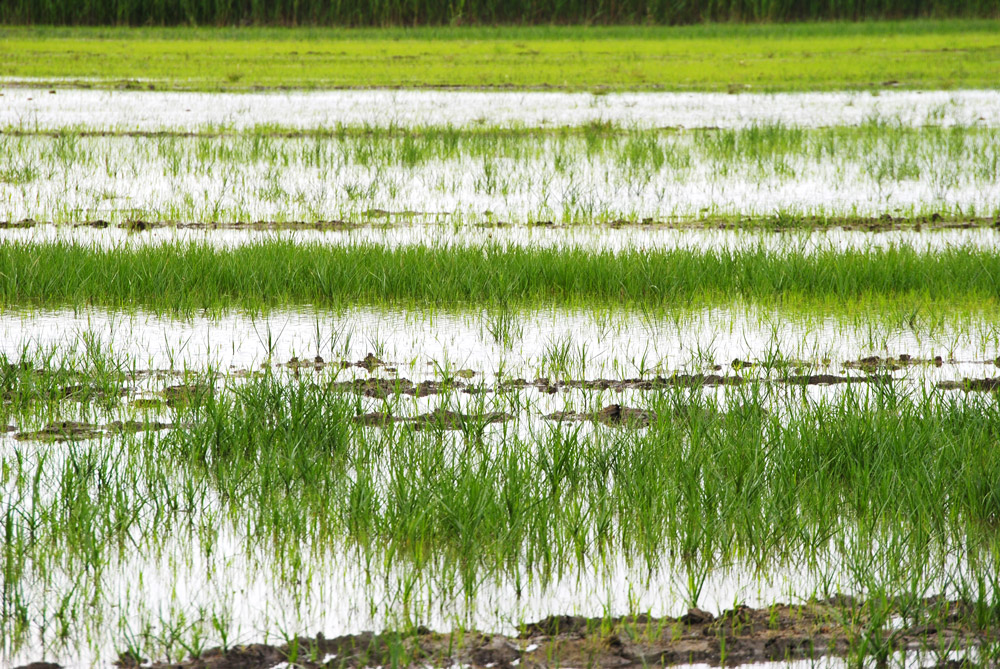When you think of the Camargue, the first pictures that come to your mind are those of vast expanses; pictures of a land where each relief seems intriguing; pictures of an area where land and sea mingle; pictures of omnipresent fauna. During your visit, you will realize that the Camargue is so much more. You will discover a mosaic of habitats and landscapes : marshes, ponds, coastal areas, salt marshes, forests, groves and farmland.
We speak of the lower, middle and upper Camargue to distinguish the landscapes.
The lower Camargue
In the south, the lower Camargue stretches into the Mediterranean Sea. Only the lighthouses and the church of Les Saintes-Maries-de-la-Mer stick out of this vast flat land. The coastline is mostly preserved from urbanization. You will find long beaches and dunes in this part of the territory. The landscape is shaped by the salt production. The water of the salt marshes reflects colored shades from blue to tender pink and purple. Salt mountains emerge here and there. The vegetation is adapted to the incursions of the sea. Only a few species spread over the vast expanses of the sansouïres: Salicornia, saltwort, obiones and saladelles.
The middle Camargue
At the center, the middle Camargue is the area with freshwater and brackish water where the Vaccarès pond and the Impériaux pond host an exceptional fauna and flora. They are protected areas managed by different nature protection stakeholders.
It is also the Camargue of open spaces, manades and rare grasslands grazed by herds of bulls and horses.
The upper Camargue
The upper Camargue with its ponds and rivers covers the area between Arles and the Vaccarès pond. Originally, this part was covered with forests, but men have cleared it to develop crop, riz and vine cultivations. It is still an area dominated by farmland. The water management infrastructures and dikes separate the “planks” of farmland with ditches with controlled water levels. Reeds, some oak groves, white poplars and hedges of tamarisk dot the cultivated areas while the Riparian forests of the Petit and Grand Rhône close the horizon. It is also the Camargue of big farming estates (mas) with their monumental entrances and lined paths of plane trees, pines or cypresses.


